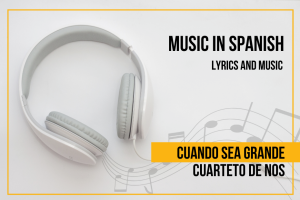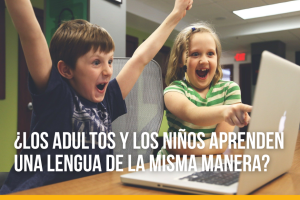Hello dear Spanish students,
In this article, I want to systematize a little, just a little, the uses of the verb “quedar,” in my opinion, the most productive and diverse verb in Spanish.
It worries me when a student says they hate something in Spanish. I’ve heard them say: having heard the subjunctive, I hate audio exercises, I hate the past tenses, I hate the verb “quedar.” I think our greatest challenge as Spanish teachers should be to turn that hatred into love. And that is very common in our school @spanishperfecto: a student who came to us and used to say they hated the subjunctive now says they love it. Can there be more satisfaction than that for a teacher? This is equivalent to the ideal for any human being: turning wars into peace or hatred into love. An ideal world, an ideal school, then.
So, I have made a list of the different uses of the verb “quedar.” The list includes:
- Actor-act schema of the verb. This schema reveals the abstract use of the verb. It represents what must be mentally prepared for that specific use, excluding the names of the actants and verb conjugations. It does include the number and type of actants required for that use of the verb, connectors such as prepositions, basic adverbs, relevant pronouns, and additional information. This schema will later be replaced by the real realization of the situation being discussed.
- An example.
- The sentence structure in terms of word categories.
- Approximate meaning.
Four steps that can be very helpful in understanding the uses of the verb.
My recommendation will always be NOT TO WANT TO LEARN all the uses together. Remember that learning is equivalent to knowing how to use. In this case, as in others where I present lists, they are only for guidance in understanding, but the idea is to repeat and use them little by little, and finally, you will be able to make a list to check not only what you know about the verb but also your mastery of it.
Let’s go through the list and the four pieces of information for each use.
1) Something looks good on someone. Al chico, la camisa le queda bien. The shirt looks good on the boy.
The structure is: Subject + indirect object pronoun + “quedar” (in the third person) + adverb of manner.
Meaning: “to look very handsome with a piece of clothing.”
2) Two or more people agree on something. Los hombres quedan en financiar un proyecto al cien por cien. The men agreed to finance a project at one hundred percent.
The structure is: Subject + “quedar” + “en” + verb/noun.
Meaning: “to reach an agreement on something.”
3) To be located somewhere. Maracaibo queda cerca de la frontera. Maracaibo is located near the border.
The structure is: Subject + “quedar” + “de” + place complement.
Meaning: “to be situated.”
4) Something is left. Todavía quedan boletos para el concierto. Ya no queda más vino. There are still tickets left for the concert. There is no more wine left.
The structure is: “quedar” + something.
Meaning: “to have/exist.”
5) To have something left. Me queda mucho dinero todavía. Ya no me queda energía, estoy muy cansada. I still have a lot of money left. I have no energy left; I am very tired.
The structure is: Indirect object pronoun + “quedar” + subject.
Meaning: “to have.”
6) To remain in a certain way. Rodrigo se quedó sin voz porque habló mucho ayer en la fiesta. Rodrigo lost his voice because he talked a lot at the party yesterday.
The structure is: Subject + verb “quedarse” + manner complement (can be an adverb or adjective).
Meaning: “a change as a consequence of a previous situation.”
7) To make a good/bad impression on someone. The boy looks very good to his girlfriend after giving her flowers.
The structure is: Subject + “quedar” + adverb of manners.
Meaning: “to cause a good or bad impression on others.”
8) Someone doesn’t remember something. El chico queda muy bien con su novia después de regalarle flores. The boy can’t remember his friends’ birthdays; he can’t remember the dates.
The structure is: Subject (the dates) + reflexive pronoun + indirect object pronoun + verb “quedar” in the third person.
Meaning: “to memorize, remember.”
9) To keep something. El gato robó los juguetes y nunca se los devolvió a su dueño. Por esta razón, se quedó con los juguetes. The cat stole the toys and never gave them back to its owner. For this reason, it kept the toys.
The structure is: Subject + reflexive pronoun + verb “quedar” + “con” + prepositional complement.
Meaning: “to come into possession of something.” For example, a borrowed object that is not returned. We also say this in the case of a purchase. Between the black car and the red one, I kept the red car (because I bought it).
10) To meet with someone. Ellos quedaron con Luis para la fiesta. They arranged to meet with Luis for the party.
The structure is: Subject + “quedar” + “con” + prepositional complement referring to a person.
Meaning: “to have made an appointment.”
11) To leave something behind. Quedó mucha comida o me queda mucha comida. There is still a lot of food left, or I have a lot of food left.
The structure is: Subject + “quedar” as an intransitive verb.
Meaning: “to leave behind traces of something.”
12) Someone leaves something somewhere. A Karen se le quedaron las llaves del carro en la oficina. Karen left the car keys in the office.
The structure is: Indirect complement + pronoun “se” + indirect object pronoun + verb “quedar” + subject.
Meaning: “to forget something somewhere.”
13) To stay somewhere. Yo me quedo en casa durante la cuarentena. I stay at home during quarantine.
The structure is: Subject + verb “quedarse” + place complement.
Meaning: “not to leave a place.”
You can have this figure of 13 meanings as the purpose of using this verb, however, don’t be surprised if you come across some other use that I haven’t included in this list.
But this is a good starting point, isn’t it?


